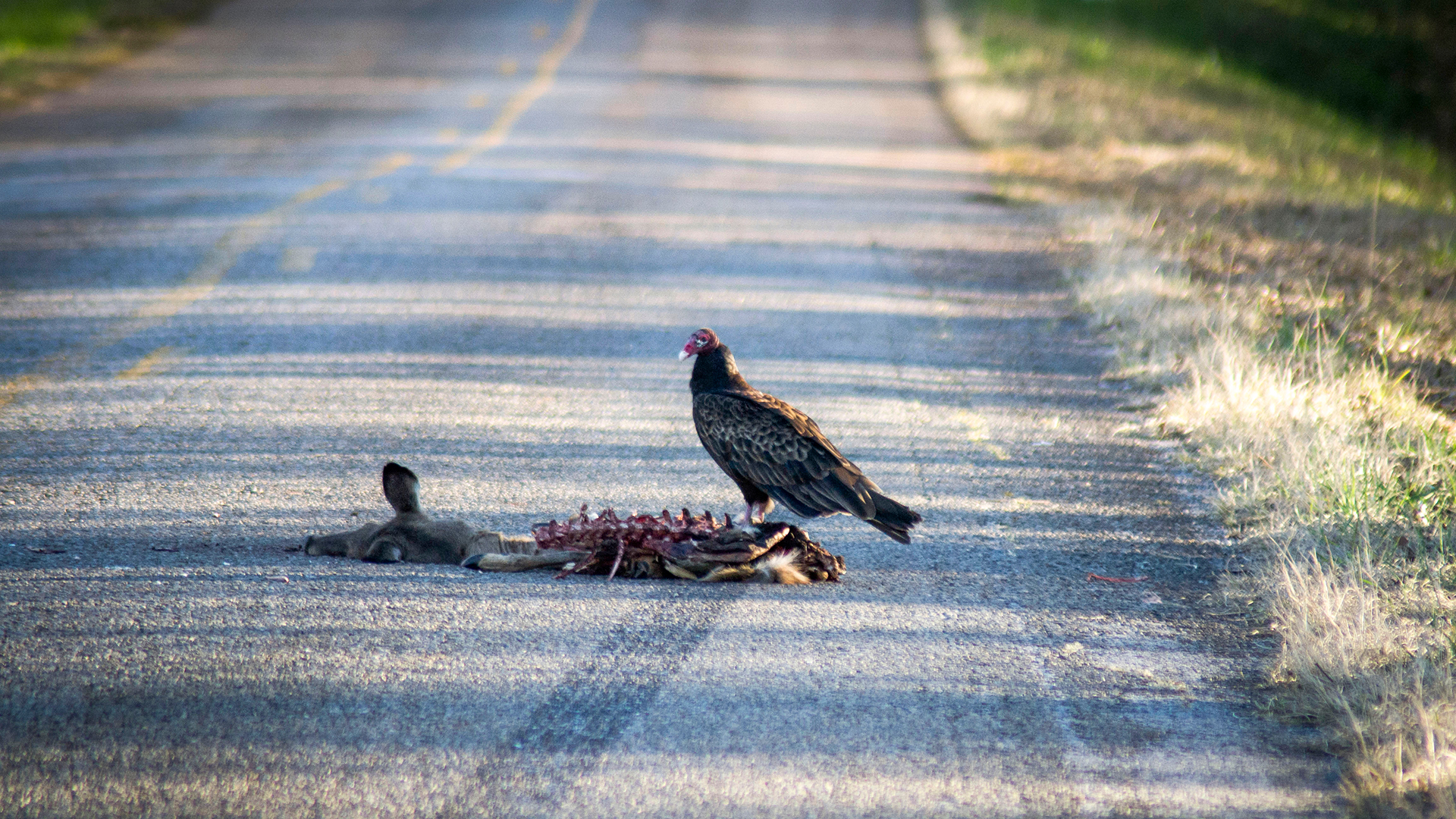Is it Safe to Eat Roadkill?
Approach with common sense and knowledge of state regulations.

Each year, vehicles kill hundreds of thousands of animals on roads in the U.S, according to the U.S. Department of Transportation Federal Highway Administration. That number could actually be much higher because not all accidents involving animals may be reported.
Rather than seeing those animals spoil and go to waste by the side of the road, dozens of states allow people to legally collect the meat for consumption.
Many carnivorous animals scavenge from prey that are already dead. But how can you know if roadkill is safe for humans to eat?
Related: Can a Person Survive Eating Only Beef?
Collecting roadkill for eating is legal in over 20 states, including Vermont, Washington, Oregon and Pennsylvania. The most recent addition to this list is California; in October, legislators legalized roadkill harvesting from three regions in the state with "high wildlife collisions," The Sacramento Bee reported. Under the terms of the new law, deer, elk, wild pigs and pronghorn antelope are fair game if they are killed in a car collision, according to the Bee.
Animals that die from their injuries after being hit by a car can be eaten safely — provided you follow some basic precautions, said Nicole Meier, an information and education specialist at the Vermont Department of Fish and Wildlife. That begins with an inspection of the animal to make sure that it wasn't sick or injured before the impact that killed it, Meier told Live Science.
Once that initial once-over is done, there are three variables that could make roadkill harmful to consume, Meier said. The first of those is heat. If a dead animal has been sprawled on a roadside in hot weather, it’s possible that the meat is unsafe to eat unless it was recently killed (for example, if you hit it yourself and know how long it's been dead).
Get the world’s most fascinating discoveries delivered straight to your inbox.
"If it's summertime and that deer has been sitting on the highway — let's just say for more than like 10 or 15 minutes — I would be super leery of it," Meier said.
Bacteria typically multiply faster in higher temperatures; they grow most rapidly in temperatures ranging between 40 and 140 degrees Fahrenheit (4 and 60 degrees Celsius), and they can double in number in as little as 20 minutes, according to the U.S. Department of Agriculture's Food Safety and Inspection Service. When the weather is warm, roadkill flesh becomes a potential hotbed of microbes that could lead to illness. In fact, after an animal has been dead for some time you can see bloating because of all the microbes breeding and producing gasses in its gut, Meier said.
Beyond salvage
Other factors to consider are the presence of dirt and water, which could expose the animal to environmental microbes. For example, if an animal is lying in a dirty puddle by the side of the road, the meat may be beyond salvage, Meier said. Even if the carcass is cool, dry and relatively clean, you would still need to make sure that the stomach and intestines weren't punctured; leaking gut bacteria could make the animal’s flesh inedible, according to Meier.
However, you may have to report to your state's wildlife enforcement to let them know that you would like to harvest the animal before you help yourself.
For example, if you want to collect meat from roadkill in Vermont, you would need to call a game warden to get a special permit for transporting wildlife, Meier said. If you've never butchered an animal before, some states' fish and wildlife departments offer classes for processing wild game, she said
Although the idea of eating roadkill may seem foreign to some people, game meat is a healthy and natural source of protein — and how the animal died shouldn't rule it out as a viable meal, Meier added.
"[Eating] wild game is something that is so deeply rooted in Vermont — and really in the U.S.," said Meier. "The more that we can sustainably harvest, the better off we will be."
- Can a Mother's Diet Affect a Baby's Food Preferences?
- Why Don't Fad Diets Work?
- Does Spicy Food Really Cause Ulcers?
Originally published on Live Science.
 Live Science Plus
Live Science Plus






